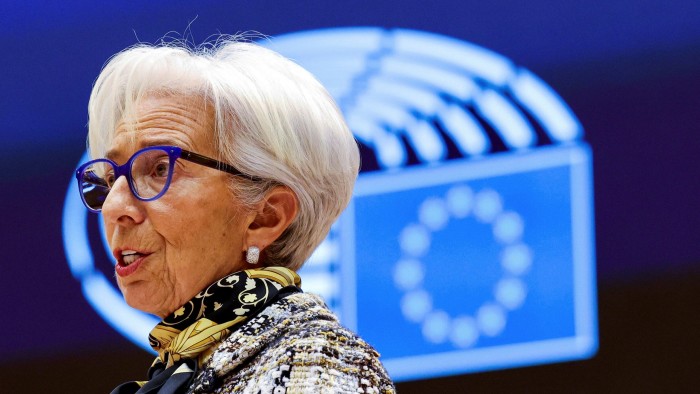The ECB strategy review is a missed opportunity

Roula Khalaf, Editor of the FT, selects her favourite stories in this weekly newsletter.
The writer is head of western European economics at JPMorgan
For the past decade, inflation outcomes in the eurozone have persistently undershot the objective of the European Central Bank.
Put differently, output and employment have been lower than they needed to be to deliver on the ECB’s self-defined measure of price stability. Those losses are material in themselves, even if they were not to continue in the future.
But they also leave a legacy of wider budget deficits, higher debt stocks and lower inflation expectations than would have been the case had the price stability objective been met. That legacy makes future losses of output relative to the economy’s potential more likely.
For almost all of this period of inflation undershoot, the ECB has set monetary policy while its own forecasts showed inflation would not reach its objective over the usual two to three-year horizon. One might have expected the ECB’s recent strategic review to engage with why this has occurred and how policy should evolve in response. There is little sign it has done so.
In its defence, the ECB can claim that it has innovated in both the design and the magnitude of its policy responses to low inflation. In the wake of the global financial crisis, it had to deal with fiscal policy that turned tight too early. The ECB also had to play a role in mediating a response to a sovereign funding crisis that politicians were slow to resolve.
The ECB has lent to banks on a large scale, set negative interest rates and bought trillions of assets. It responded to the pandemic promptly. Not only are those policies still operating but the ECB promises to continue that action well into the future. And the ECB argues that it has further room to deploy these tools and others as needed.
But if the ECB has the policy tools to return inflation to its objective, why does it not deploy them? It can be argued that as policy has become ever more unconventional, its impact has become more uncertain. The policy changes needed to bring inflation (or at least the ECB’s forecast for it) back up to the target, then, would also bring an increase in the uncertainty of the forecast.
For example, the possibility of financial instability could increase as asset purchases extend. Alternatively, the ECB may be concerned that perverse or destabilising incentives for fiscal policymakers may be created with ever larger purchases of sovereign debt.
While such arguments can legitimately be made, it is up to the ECB to make them if that is the explanation for its tolerance of low inflation. In making those arguments, the ECB would highlight the role other policies and policymakers could play in the mix.
For example, if financial instability is the fear, the ECB should be making it clear that macroprudential and other regulatory interventions will become more important. If fiscal incentives are the concern, the ECB needs to highlight that.
Rather than engaging in these debates, the ECB has chosen to obfuscate what its policy is designed to achieve. The intermediate objective of sustaining “favourable financing conditions” has recently been introduced. But (by design) no cogent, quantitative definition of that objective has been provided. Nor has there been any systematic account of why that intermediate objective is the right way to go about delivering price stability.
The strategy review has clarified that the ECB gives equal weight to deviations of inflation above and below a 2 per cent target. It has also introduced the notion of greater tolerance for inflation overshoot after a period when policy has been constrained by the effective limits on how low interest rates can be cut.
But the impact these ideas may have in building the credibility of the inflation objective is undermined by the ECB’s failure to explain why the prospect of inflation undershoot in the forecast is tolerated now.
One only needs to look to the Bank of Japan’s recent experience to see that large-scale and persistent monetary policy action, not to mention a tolerance (albeit unwelcome) for inflation overshoot, are not sufficient conditions for it to occur.
The US Federal Reserve has shifted its regime to ensure that its more limited inflation undershoot will be made up over time. ECB president Christine Lagarde has suggested that the strategy review has provided a “European” implementation of the same idea. But there is a big difference between stating that inflation above the target will be actively sought and merely tolerating it as a risk after a period of undershoot. That difference is now being reflected in the behaviour of wage and price setters.
Greg Fuzesi at JPMorgan contributed to this article
Comments